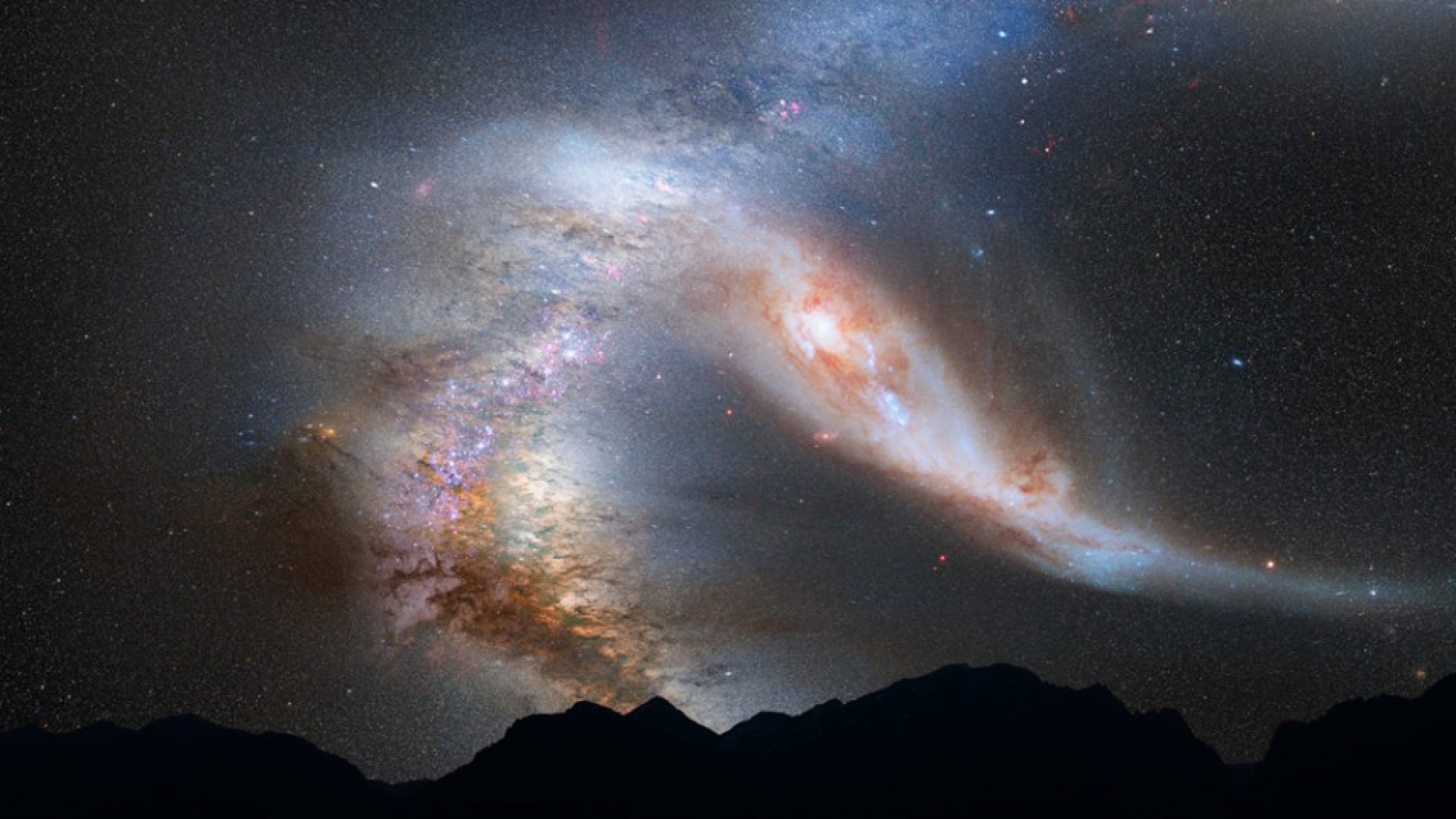Milky Way Galaxy, Andromeda Destined For Head-On Collision; Hybrid Galaxy Will Be Created: NASA [Photos & Video]
Four billion years from now, the Milky Way galaxy won't remain the same as we know it today. A major cosmic event is on its way, which will bring an unprecedented makeover to the home of our solar system.
A titanic collision of the Milky Way galaxy with its neighboring Andromeda galaxy was predicted by NASA astronomers Thursday. Expected to happen four billion years from now, the huge galactic smashup will bring a major makeover for the Milky Way galaxy, with the Sun being flung into a new region of the galaxy. However, the Earth and the solar system will remain out of danger, according to astronomers.
As noted by space.com, the major collision of both the galaxies would eventually create an entirely new hybrid galaxy, which will likely have an elliptical shape rather than the Milky Way's trademark spiral-armed disk.
Astronomers made the striking revelation based on the measurements of the motion of Andromeda galaxy by NASA Hubble Space Telescope. The galaxy, also known as M31, is currently 2.5 million light-years away, but it is inevitably falling toward the Milky Way under the mutual pull of gravity between the two galaxies and the invisible dark matter that surrounds them both.
According to computer simulations derived from Hubble's data, it will take another two billion years after the encounter for the interacting galaxies to completely merge under the tug of gravity and get reshaped into a single elliptical galaxy, which some astronomers have dubbed the Milkomeda galaxy.
We do know of other galaxies in the local universe around us that are in the process of colliding and merging, said Roeland van der Marel of the Space Telescope Science Institute (STScI). However, what makes the future merger of the Andromeda galaxy and the Milky Way so special is that it will happen to us.
Unprecedented Cosmic Crash
The Milky Way galaxy is believed to have started taking shape about 13.5 billion years ago. If the predicted collision indeed takes place, it would be the first of its kind in the long history of our home galaxy.
The Milky Way has had, probably, quite a lot of small, minor mergers, Rosemary Wyse of Johns Hopkins University in Baltimore told Space.com. But this major merger will be unprecedented.
Although the galaxies will plow into each other, there won't be any real danger of destroying Earth or the solar system. In addition, they will also not likely to collide with other stars during the encounter since there are vast stretches of empty space separating the stars in each galaxy.
However, the stars will be thrown into different orbits around the new galactic center. Simulations show that our solar system will probably be tossed much farther from the galactic core than it is today. On top of that, M31's small companion, the Triangulum galaxy (M33), will also join in the collision and perhaps later merge with the M31/Milky Way pair. There is a small chance that M33 will hit the Milky Way first.
A New Night Sky!
The Milky Way-Andromeda crash would change the view of the night sky too. If any humans are still around by that time, they will be watching Andromeda as it sidles up next to our Milky Way, according to space.com.
For the next few billion years after that, stargazers will be spellbound by the merger, which will trigger intense bouts of star formation, said the report.
According to researchers, the bright core of the elliptical Milkomeda galaxy will dominate the night sky about seven billion years from now.



© Copyright IBTimes 2024. All rights reserved.












